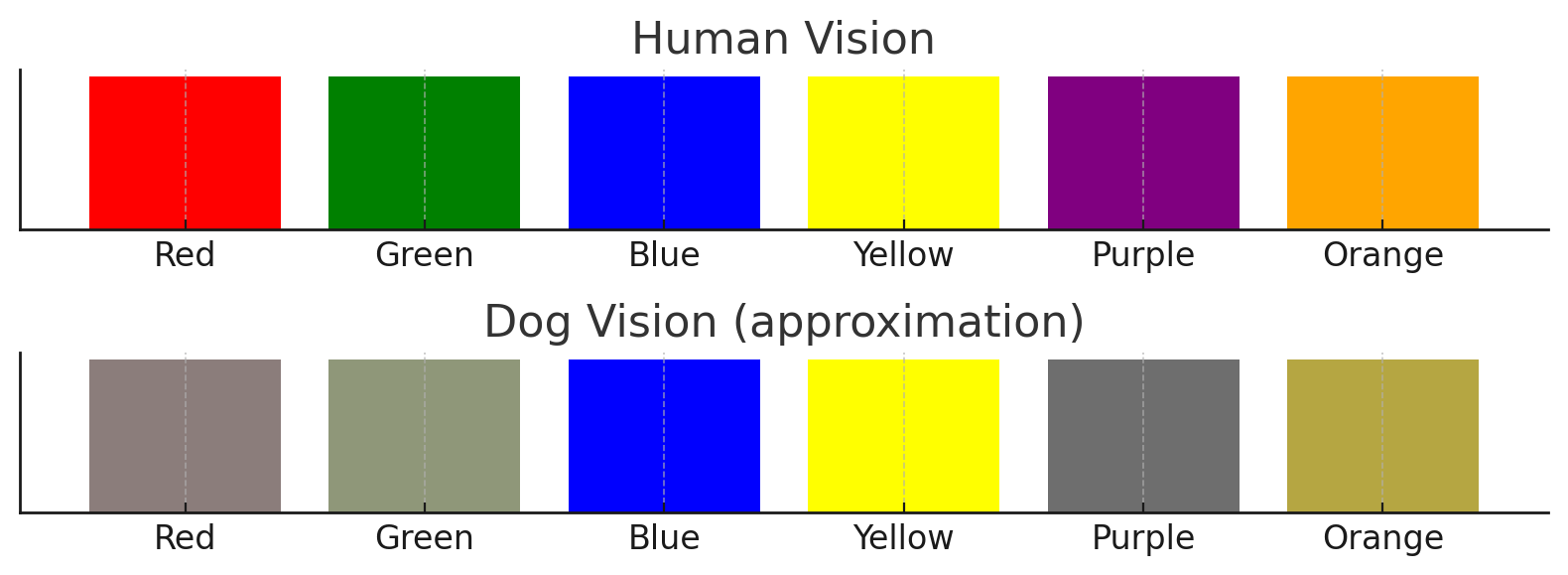It is a common belief that dogs see the world only in black and white. However, research has shown this is not true—dogs can see colour, just not in the same way humans do.
How Human Vision Works
Human eyes contain three types of colour receptors, called cones, which allow us to see a wide spectrum of colours—reds, blues, greens, and all their variations. This is known as trichromatic vision.
How Dogs See the World
Dogs, on the other hand, have only two types of cones, giving them dichromatic vision. This means:
* They can see blue and yellow shades clearly.
* They cannot distinguish red and green. These colours appear as shades of brown or grey.
In simple terms, a dog’s vision is similar to a person with red-green colour blindness.
Why Dogs Don’t Need Full Colour Vision
Although dogs don’t see the world as vividly as we do, their eyesight is adapted for their needs:
* Better motion detection – Dogs are excellent at noticing movement, even at a distance.
* Superior night vision – Dogs see better in low light thanks to more rods in their eyes and a reflective layer called the tapetum lucidum, which helps them in the dark.
* Wide field of view – Depending on their breed, dogs often have a wider range of vision than humans.
Practical Implications for Owners
Knowing how dogs see can help you make better choices for training and play:
* Toy colours – Choose toys in blue or yellow rather than red or green, as these stand out more clearly to your dog.
* Training aids – Coloured markers, jumps, or obstacles in sports should consider a dog’s visual range.
* Understanding behaviour – If your dog doesn’t react to a red ball on green grass, it may not be disinterest—it could simply be hard for them to see.
The World Through Your Dog’s Eyes
While dogs may not see the rainbow of colours humans do, they perceive their surroundings in a way perfectly suited to their lifestyle. Their keen sense of smell, ability to detect movement, and strong hearing all combine to give them a rich and detailed picture of the world—just different from ours.

